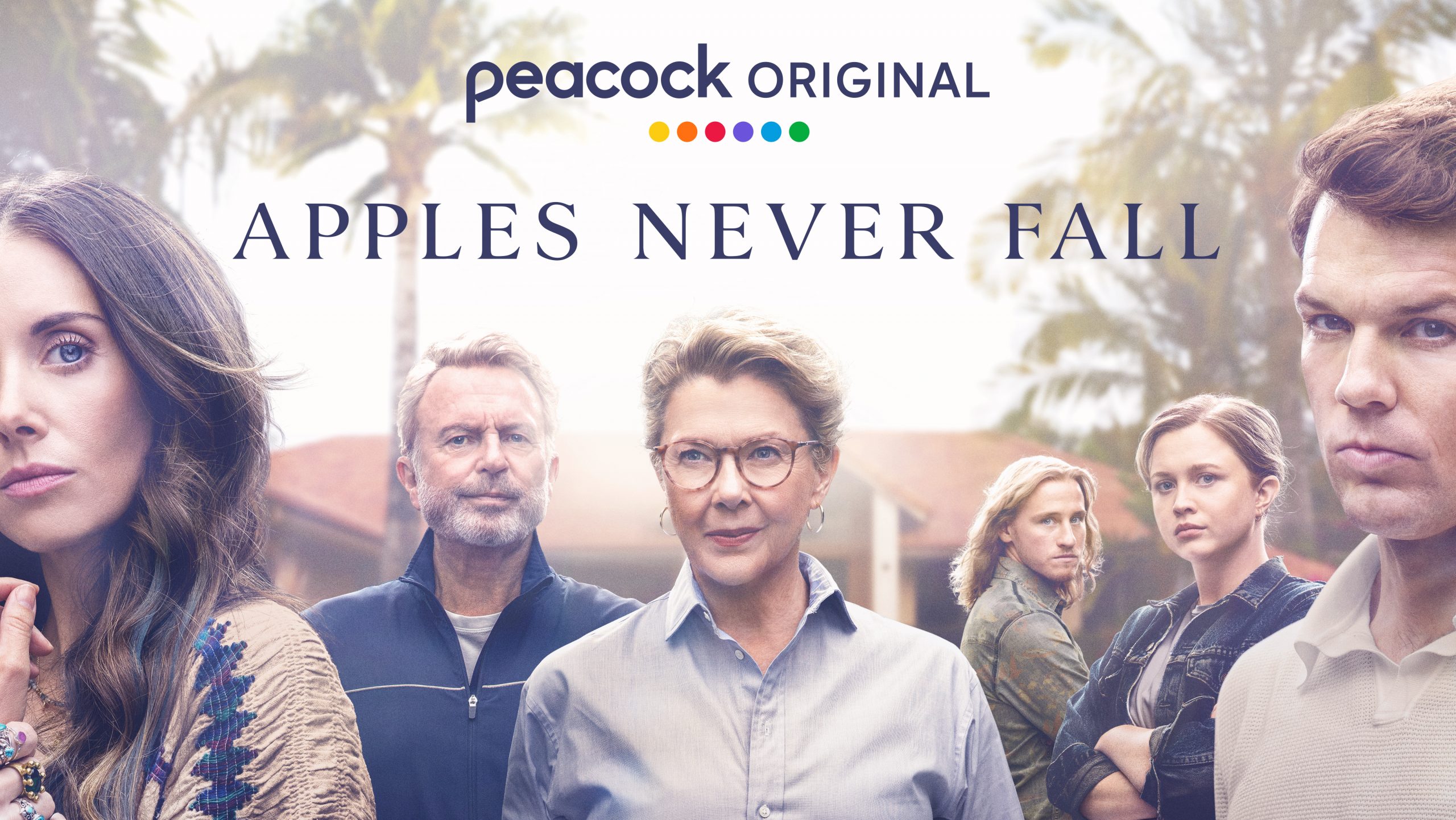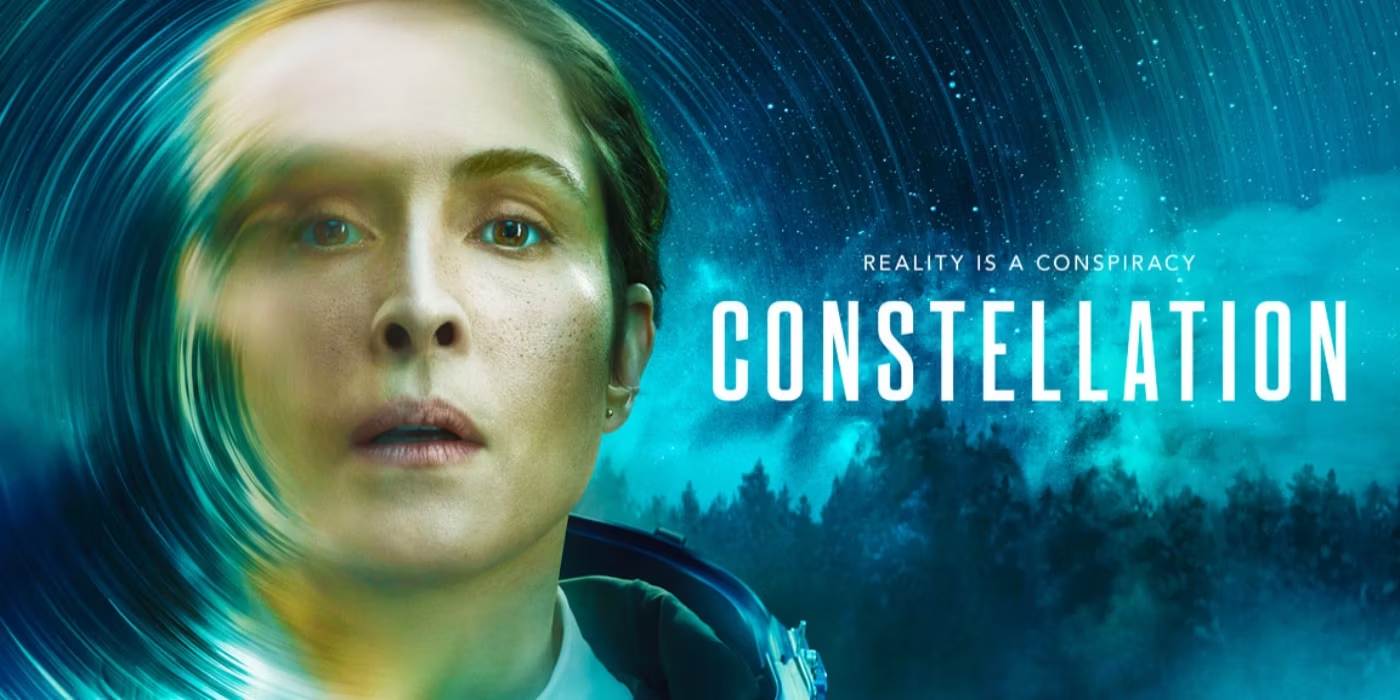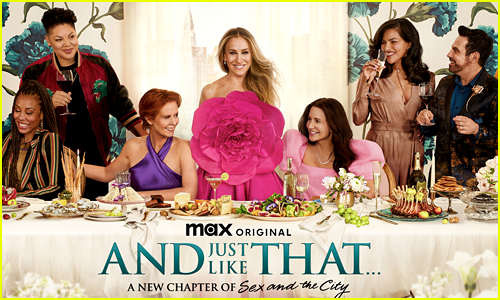Susan Granger’s 2024 OSCAR PREDICTIONS:
Jimmy Kimmel hosts the 96th Academy Awards, airing Sunday, March 10 on ABC.
The most important difference between 2024 and previous years is the increasing internationalization of the 9,800-member Academy since the #OscarsSoWhite influx of new members after 2015. The Academy revealed that members from 93 countries cast nomination ballots this year; international members now comprise 25% of the total voters.
Many of them are accustomed to watching films with subtitles, which helps to explain how “Anatomy of a Fall,” “ Past Lives” and “The Zone of Interest” landed best picture noms, along with the directors of “Anatomy” (Triet) and “Zone” (Glazer). The star of “Anatomy” (Hüller) got a lead actress nod and the Japanese film “The Boy and the Heron” was chosen for animation. And all five documentary nominees came from outside the United States.
To put this into perspective, it’s been 20 years since the year’s biggest blockbuster – 2003’s “Lord of the Rings: The Return of the King” – took best picture. Last year, “Avatar: The Way of Water” and “Top Gun: Maverick” made the cut, but an art house film – “Everything Everywhere All at Once” – won. This year, it will be “Oppenheimer,” grossing nearly $1 billion worldwide; with 13 nominations, it could break the record for the most Oscar wins in one night.
Here are the 10 Best Picture nominees:
“American Fiction”: a biting satire about racial representation
“Anatomy of a Fall”: a twisty whodunit courtroom thriller
“Barbie”: a candy-colored feminist comedy skewering patriarchy
“The Holdovers”: misadventures in a 1970s Christmas dramedy
“Killers of the Flower Moon”: a tragic historical crime drama
“Maestro”: Leonard Bernstein’s complicated marital love story
“Oppenheimer”: a biopic about physicist J. Robert Oppenheimer
“Past Lives”: an Asian-American romance between childhood friends
“Poor Things”: a surreal, feminist ‘Frankenstein’ gender-bender
“The Zone of Interest”: a Holocaust drama about the banality of evil
MY PREDICTION: “Oppenheimer”
For Best Director, nominees are Jonathan Glazer (“The Zone of Interest”), Yogos Lanthimos (“Poor Things”), Christopher Nolan (“Oppenheimer”), Martin Scorsese (“Killers of the Flower Moon”) & Justine Triet (“Anatomy of a Fall”).
Controversy concerns the omission of “Barbie” director Greta Gerwig, the first filmmaker in history to have her first three solo features – “Lady Bird,” “Little Women” & “Barbie” – nominated for best picture.
Nominees are selected by the Directors branch consisting of just 587 voters – about a quarter of whom are women. Historically, however, this highbrow group has rejected mainstream, even blockbuster, studio fare, choosing three directors who live and work primarily in Europe. That’s probably why Justine Triet – only the 8th woman ever nominated – squeezed in, while Alexander Payne (“The Holdovers”) was excluded.
Yet the odds-on favorite is Christopher Nolan, winner of the Directors Guild Award. FYI: he doesn’t own a telephone; the only way to contact him is via his wife/producing partner Emma Thomas.
MY PREDICTION: Christopher Nolan
Back in 2009, five previous Acting winners introduced the nominees in the four Acting categories; that segment was so popular that the Academy plans to repeat it for the five current contenders. Although the Academy never reveals who will be presenting which awards, you can bet that last year’s four winners – Brendan Fraser, Michelle Yeoh, Ke Huy Quan and Jamie Lee Curtis – will be among them.
For Best Actress, nominees are Annette Bening (“Nyad”), Lily Gladstone (“Killers of the Flower Moon”), Sandra Huller (“Anatomy of a Fall), Carey Mulligan (“Maestro”) & Emma Stone (“Poor Things”).
Lily Gladstone is the first Native American nominated in this category; her quiet performance as Mollie Burkhardt highlights the film’s most riveting and powerful moments. But she doesn’t propel the picture the way Emma Stone captures woman/child in the feminist Frankenstein gender-bender. It’s the fifth nomination for Annette Bening, who’s a long-shot but would get my vote. Carey Mulligan was exquisite as Leonard Bernstein’s long-suffering wife Felicia Montealegre and – with a strong international following – German actress Sandra Huller starred in both “Anatomy” and “Zone of Interest.”
MY PREDICTION: Lily Gladstone
For Best Actor, nominees are Bradley Cooper (“Maestro”), Colman Domingo (“Rustin”), Paul Giamatti (“The Holdovers”), Cillian Murphy (“Oppenheimer”) & Jeffrey Wright (“American Fiction”).
Curmudgeonly Paul Giamatti was a natural as the odiferous, socially challenged professor stuck at a prep school over Christmas, as was Jeffrey Wright as the bitter, razor-sharp novelist courting fame and fortune. Bradley Cooper tackled Leonard Bernstein’s personal angels and demons, and Cillian Murphy was convincing as the ‘father’ of the atomic bomb. He’d be the first Irish-born actor to win Best Actor.
Playing Bayard Rustin who helped organize the 1993 March on Washington, Colman Domingo is the first Afro-Latino nominated as lead actor and only the second openly LGBTQ+ actor nominated for playing a gay character; Ian McKellen was the first for “Gods and Monsters” (1998).
MY PREDICTION: Cillian Murphy
For Best Supporting Actress, nominees are Emily Blunt (“Oppenheimer”), Danielle Brooks (“The Color Purple”), America Ferrera (“Barbie”), Jodie Foster (“Nyad”) & Da’Vine Joy Randolph (“The Holdovers”).
Emily Blunt added humanity as the physicist’s wife, and Danielle Brooks reprised her acclaimed stage role. I cheered when America Ferrera delivered that powerful monologue in “Barbie” about the complexities of being a woman, and this is the first time openly gay Jodie Foster has played a lesbian character. But the odds-on favorite is Da’Vine Joy Randolph whose portrayal of a grieving mother gave “The Holdovers” dramatic depth and heart.
MY PREDICTION: Da’Vine Joy Randolph
For Best Supporting Actor, nominees are Sterling K. Brown (“American Fiction”), Robert De Niro (“Killers of the Flower Moon”), Robert Downey Jr. (“Oppenheimer”), Ryan Gosling (“Barbie”) & Mark Ruffalo (“Poor Things”).
Sterling K. Brown nails the gay cosmetic surgeon in a midlife crisis; Robert De Niro oozes evil on the Oklahoma prairie; Ryan Gosling was “Keough;” Mark Ruffalo was delightfully dastardly; but Robert Downey Jr. was so utterly contemptible.
MY PREDICTION: Robert Downey Jr.
For Best Editing, nominees are “Anatomy of a Fall,” “The Holdovers,” “Killers of the Flower Moon,” “Oppenheimer” & “Poor Things.”
In the non-linear “Oppenheimer,” Jennifer Lame cuts from color to black-and-white as the renowned scientist supervises the building, testing and aftermath of the atomic bomb.
Thelma Schoonmaker edited “Killers,” Scorsese’s first epic Western, to convey the scope of the tragedy. Given the absurdity of “Poor Things,” Yorgos Mavropsaridis makes the concept psychologically plausible, while Kevin Tent makes the wacky “The Holdovers” believable.
MY PREDICTION: “Oppenheimer”
For Best Cinematography, nominees are “El Conde,” “Killers of the Flower Moon,” “Maestro,” “Oppenheimer” & “Poor Things.”
Nominated three times before, DP Rodrigo Prieto’s naturalistic “Killers” encompassed the world of the Osage Nation, while DP Hoyte Van Hoytema scores his second nomination, depicting the explosive Trinity test with no CG simulation; he also worked with Kodak to develop black-and-white 70mm film stock for the monochromatic aspects of “Oppenheimer.” Others in contention include Matthew Libatique for “Maestro” and Robbie Ryan for “Poor Things.”
MY PREDICTION: “Oppenheimer”
For Best Production Design, nominees are “Barbie,” “Killers of the Flower Moon,” “Napoleon,” “Oppenheimer” & “Poor Things.”
How do you compare Sarah Greenwood/Katie Spencer’s dazzling pink plastic Barbie Land (which caused a global shortage of fluorescent pink paint) with Ruth De Jong’s reconstruction of the New Mexico desert town of Los Alamos and Jack Fisk’s depiction of the Reign of Terror that struck Oklahoma’s booming Osage Nation in the 1920s?
Arthur Max was charged with staging the French emperor’s six major battles, while Shona Heath/James Price were tasked with creating Gothic images in both black-and-white and color.
MY PREDICTION: “Barbie”
For Best Original Screenplay, nominees are “Anatomy of a Fall,” “The Holdovers,” “Maestro,” “May-December” & “Past Lives.”
Justine Triet’s “Anatomy of a Fall” revolves around a woman on trial for murdering her husband; Todd Haynes’ sad/sordid “May-December” profiles an actress doing research on the woman she’ll portray; David Hemingson scored nostalgia points with “The Holdovers”; Bradley Cooper & Josh Singer delved into Leonard Bernstein’s marriage in “Maestro;” and Celine Song’s “Past Lives” may linger in people’s minds. Justine Triet could be the first French woman to win in this category.
MY PREDICTION: “Anatomy of a Fall”
For Best Adapted Screenplay, nominees are “American Fiction,” “Barbie,” “Oppenheimer,” “Poor Things” & “The Zone of Interest.”
Greta Gerwig & Noah Baumbach crafted a smart, witty script that packs a feminist punch; they could win since Gerwig was snubbed as Best Director. Yet the front-runner is Christopher Nolan who made every word count with real-life characters in “Oppenheimer.” Jonathan Glazer’s “Zone” goes behind-the-scenes at Auschwitz death camp; Yorgos Lanthimos’s “Poor Things” is a macabre coming-of-age tale. But perhaps it’s Cord Jefferson’s “American Fiction,” skewering the publishing industry, that’s the most surprising.
MY PREDICTION: “American Fiction”
For Best International Film, nominees are “Io Capitano” (Italy), “Perfect Days” (Japan), “Society of the Snow” (Spain), “The Teachers Lounge” (Germany) & “The Zone of Interest” (United Kingdom).
“Io Capitano” follows a teenage Senegalese immigrant’s quest to reach Italy. Wim Wenders’ “Perfect Days” follows a Japanese toilet cleaner‘s simple city routine. “Society of the Snow” is a real-life survival thriller. “The Teachers Longe” revolves around an idealistic instructor. “The Zone of Interest” evokes the horrors of the Holocaust; it could score the first UK win in this category since the main dialogue is not English.
Although it copped Best Picture, Best Director & Best Original Screenplay nominations, “Anatomy of a Fall” is not eligible since France did not choose to submit it as its entry.
MY PREDICTION: “The Zone of Interest”
For Best Animated Feature, nominees are “The Boy and the Heron,” “Elemental,” “Nimona,” “Robot Dreams” & “Spider-Man: Across the Spider-Verse.”
Hayao Miyazaki’s hand-drawn “Boy” will probably the last that the 82 year-old Japanese master will direct. “Elemental” boasts a wondrous character-driven narrative, while “Nimona” profiles a female who just wants to be seen for who she is. So does might make right? This “Spider-Man” sequel made $690.5 million at the worldwide box-office.
MY PREDICTION: “Spider-Man: Across the Spider-Verse”
For Best Visual Effects, nominees are “The Creator,” “Godzilla Minus One,” “Guardians of the Galaxy, Vol. 3,” “Mission Impossible: Dead Reckoning, Part One” & “Napoleon.”
What’s extraordinary is that VFX veteran Neil Corbould (winner for the original “Gladiator” & “Gravity”) supervised three of the five nominated films. Tom Cruise’s “Mission” franchise upped its game with the Fiat 500 car chase in Rome and the spectacular Orient Express train sequence where the train plummeted from the exploding bridge, one carriage at a time; the legendary French emperor “Napoleon” fought epic battles involving massive crowds; and “The Creator” was filled with fabricated pyrotechnics and explosions. Problem is: how will voters for Corbould chose among these three films?
And let’s not forget that in its 70-year franchise history, this is the first VFX nomination for a “Godzilla” film.
MY PREDICTION: “Godzilla Minus One”
For Best Costume Design, nominees are “Barbie,” “Killers of the Flower Moon,” “Napoleon,” “Oppenheimer” & “Poor Things.”
“Barbie” is the dazzling favorite – with Jacqueline Durran covering Mattel’s fashion history and tailoring it to the story narrative. For “Killers,” costumer Jacqueline West worked with Pendelton to secure 1,000 authentic Osage Nation blankets.
For “Poor Things,” Holly Waddington conveyed traumatized Bela’s transition from wearing a white silk cape to the futuristic use of latex and plastic. In “Napoleon,” Janty Yates went for neo-classical fashion while David Crossman handled the military garb. And Ellen Mirojnick chose those iconic three-pieces suits for the titular “Oppenheimer.”
MY PREDICTION: “Barbie”
For Best Makeup & Hairstyling, nominees are “Golda,” “Maestro,” “Oppenheimer,” “Poor Things” & “Society of the Snow.”
Bradley Cooper’s nose in “Maestro” was the most controversial transformation but can it win a third Oscar for Kazu Hiro? Equally admirable was Luisa Abel’s turning Robert Downey Jr. into elderly Admiral Lewis Strauss in “Oppenheimer” and Karen Hartley Thomas molding Helen Mirren into “Golda” Meir. For “Poor Things,” Nadia Stacey transformed Emma Stone from feral to outlandish and made Willem Dafoe’s deformed face a prosthetic marvel.
MY PREDICTION: “Maestro”
For Best Sound, nominees are “The Creator,” “Maestro,” “Mission Impossible: Dead Reckoning, Part One,” “Oppenheimer” & “The Zone of Interest.”
With its subatomic and cosmic sounds, “Oppenheimer” is a favorite but the more intimate visceral approach for “Mission Impossible” made it memorable. Yet in “Zone,” it was only sound that conveyed the scope of the horrors that the audience did not witness.
MY PREDICTION: “Oppenheimer”
For Best Documentary, non-fiction nominees are “Bobi White: The People’s President,” “The Eternal Memory,” “Four Daughters,” “To Kill a Tiger” & “20 Days in Mariupol.”
“Bobi White” features a former Presidential candidate fighting against a vicious dictator in Uganda. Chilean Maite Alberdi’s “Eternal” resonates as a romantic story about the devastation of Alzheimer’s. “Tiger” chronicles rural women’s difficulties to find justice in a deeply misogynistic society. Tunisia’s “Four Daughters” blends real interviews with staged reenactments to show a mother’s struggle to understand why two of her girls joined ISIS in Libya. And “20 Days” is Pulitzer Prize-winner Mstyslav Chernov’s timely war journalist story.
MY PREDICTION: “20 Days in Mariupol”
For Best Original Score, nominees are “American Fiction,” “Indiana Jones and the Dial of Destiny,” “Killers of the Flower Moon,” “Oppenheimer” & “Poor Things.”
At 91, John Williams is the oldest competitive award nominee. This year’s nod for “Indiana Jones” brings his total to 54 – more than any other living person. (Walt Disney holds the record with 59.)
Composer Hildur Guonadottir began “Oppenheimer” with a violin solo, tracing the scientist’s intense emotional journey. British musician-turned-composer Jerskin Fendrix (a.k.a. Joscelin Dent-Pooley) is a contender for “Poor Things”; to achieve dissonance, he told his musicians to ‘play stupid’ during Bella’s wobbly pieces. And “Killers” was Robbie Robertson final score, making him a sentimental choice.
MY PREDICTION: “Oppenheimer”
For Best Original Song, nominees are “The Fire Inside” (“Flamin’ Hot”), “I’m Just Ken” (“Barbie”), “It Never Went Away” (“American Symphony”), “Wahzhazhe – A Song for My People” (“Killers of the Flower Moon”) & “What Was I Made For?” (“Barbie”).
Nominated 15 times and given an Honorary Oscar, veteran song writer Diane Warren has never won so perhaps “The Fire Inside,” performed by Latin superstar Becky G, will prove lucky. But look out for siblings Billie Eilish and Finneas O’Connell who won for “No Time to Die” (2022); a “What Was I Made For” win this year would make them the first songwriters to win twice in three years since Tim Rice won in 1995 & 1997 for songs from “The Lion King” and “Evita.” But then there’s Mark Watson & Andrew Wyatt’s “I’m Just Ken.”
MY PREDICTION: “What Was I Made For?”
For Best Animated Short Film, nominees are “Letter to a Pig,” “Ninety-Five Senses,” “Our Uniform” “Pachyderme” & “War is Over! Inspired by the Music of John & Yoko.”
The Holocaust, morality and abuse are serious themes captured by this year’s nominees.
MY PREDICTION: “Letter to a Pig”
For Best Documentary Short Film, nominees are “The ABCs of Book Banning,” “The Barber of Little Rock,” “Island in Between,” “The Last Repair Shop” and “Nai Nai & Wai Po.”
They spotlight local heroes, urgent issues and a couple of grandmothers who make everything right.
MY PREDICTION: “The ABCs of Book Banning”
For Best Live Action Short Film, nominees are “The After,” “Invincible,” “Knight of Fortune,” “Red, White and Blue” & “The Wonderful Story of Henry Sugar.”
Despite their brief runtimes, all five successfully tackle complex issues. In “The After,” David Oyelowo is a grief-stricken Uber-esque driver; “Invincible” focuses on a French suicide; “Knight of Fortune” explores grief in a morgue; “Red, White and Blue” finds a pregnant single mother in need of an abortion that’s illegal in Arkansas; and Wes Anderson adapts Roald Dahl’s flight of fancy in “Henry Sugar.”
MY PREDICTION: “The Wonderful Story of Henry Sugar”










